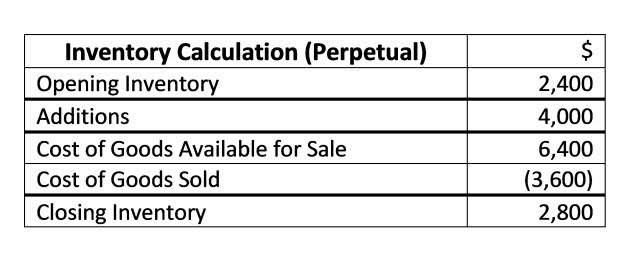By recognizing and optimizing the contributions of indirect labor, businesses can unlock hidden value and gain a competitive edge in their respective markets. Human resources professionals, on the other hand, might focus on the qualitative aspects of indirect labor optimization. This includes employee training programs, career development paths, and job satisfaction initiatives that can lead to increased productivity and reduced turnover. Accountants, on the other hand, view period costs as critical proforma invoice template for accurate financial reporting. They ensure that these costs are properly recorded and matched with the revenues of the same period, adhering to the matching principle of accounting. From the perspective of management, period costs are often seen as necessary evils—expenses that don’t directly contribute to production but are essential for running the business.
Due to this reason, an entity’s total direct labor cost is often much higher than just the basic production related wages or salaries paid to workers as their remunerations. From the perspective of a financial controller, the focus is on accurate allocation and monitoring. They might implement activity-based costing to gain a clearer picture of how indirect labor contributes to overall expenses. A human resources manager, on the other hand, might look at workforce optimization, ensuring that staff are well-trained and that their skills are utilized efficiently across various departments.
- Understanding the impact of indirect labor on overhead costs is crucial for any manufacturing or production facility.
- Starting a nonprofit can be a fulfilling way to make a difference in the community, but it requires careful planning and consideration.
- Since indirect labor cannot be directly tied to a specific product, its cost is typically allocated as part of manufacturing overhead.
- This can include employees who perform tasks such as maintenance, supervision, or quality control.
- Unlike direct labor, which is easily traceable to the production of specific goods or services, indirect labor involves tasks that support the production process but are not tied to specific units of output.
Paying Family Members in a Small Business: Legal, Tax & Practical Guidelines
Indirect labor costs such as salaries, wages, and benefits for staff not directly accrual basis of accounting involved in production can significantly contribute to the overall overhead expenses of a business. For cost accounting purposes, the company would need to allocate these indirect labor costs to each car produced. For example, it might calculate an overhead rate based on direct labor hours and then apply this rate to the direct labor hours spent on each car to allocate the indirect labor costs.
These can include administrative salaries, utilities for the office building, or marketing expenses. Managers must carefully monitor these costs, as they can quickly erode profits if not kept in check. Direct labor refers to employees who are directly involved in the production of goods or services, while indirect labor supports the production process indirectly.
Support
This lack of visibility makes it difficult to monitor how resources are allocated and utilized, leading to potential inefficiencies and overspending. Improved tracking systems can provide real-time data on indirect labor activities, helping companies to identify areas for optimization and cost reduction. Indirect labor holds significant importance in finance as it directly impacts overhead expenses, operational efficiency, profitability, and budgeting processes within an organization. Indirect labor is a crucial concept in the realm of finance and business operations, encompassing a wide range of essential but often overlooked personnel and functions within a company.
Companies can manage indirect labor costs by carefully analyzing their staffing needs, implementing efficient processes, and utilizing technology to streamline operations. Automating repetitive processes through technology and workflow enhancements empowers companies to improve management efficiency and resource utilization, leading to significant control over indirect labor costs. Indirect labor refers to the labor cost incurred in the production process that is not directly involved in the conversion of materials into finished products. It includes the wages and benefits of employees who support or facilitate the production process but do not directly work on the manufacturing or assembly of the products. Indirect labor refers to the labor costs of employees that are not directly involved in the production of goods or services but contribute to the overall functioning of the company.
Why Is Indirect Labor Important in Finance?
This involves regular audits of labor utilization, the implementation of time-tracking systems, and the analysis of labor-related data to identify areas of waste or inefficiency. The effect of indirect labor on profitability involves careful financial control, accurate absorption costing, and variance analysis to ensure optimal utilization and productivity of resources. Understanding the cost of indirect labor is essential for cost accounting and for managerial decision-making, including pricing products, planning and budgeting, and assessing efficiency.
- This approach allows managers to reallocate resources to more strategic and value-added tasks, reducing the likelihood of errors and inefficiencies.
- Subscription-based bookkeeping services are transforming the way businesses manage their finances, offering predictable pricing, scalability, and automation-driven efficiency.
- This method plays a pivotal role in cost management and aids in maintaining a competitive edge in today’s dynamic business environment.
- Indirect workers perform tasks necessary for the overall running and maintenance of the firm, such as administrative staff, security personnel, and maintenance workers, among others.
- By identifying and allocating costs based on specific activities, businesses can make more informed budgeting decisions, leading to greater cost control and improved overall financial health.
- By using data and analytics to predict when equipment will require servicing, they can prevent unexpected downtime, thus not only saving costs but also ensuring that the direct labor force remains productive.
Indirect labor, on the other hand, includes employees who support the production process but do not work directly on the products, such as maintenance workers, supervisors, or quality control inspectors. Since indirect labor cannot be directly tied to a specific product, its cost is typically allocated as part of manufacturing overhead. Indirect labor is a critical component of any business, often overlooked in favor of its more direct counterpart. This includes roles such as maintenance workers, supervisors, and quality control inspectors. Their work, although not directly adding value to the product, is essential for maintaining a smooth operation and ensuring that the direct labor force can perform their duties effectively.
This method plays a pivotal role in cost management and aids in maintaining a competitive edge in today’s dynamic business environment. Financial control measures such as budgeting and cost management play a crucial role in mitigating the impact of indirect labor costs on profitability. Adopting appropriate absorption costing methodologies ensures that all manufacturing overheads, including indirect labor, are allocated to products accurately.
In finance, considerations for budgeting include the accurate allocation, classification, and control of indirect labor costs, often utilizing activity-based costing methods to enhance budgeting accuracy. On the other hand, direct labor comprises workers directly involved in manufacturing products or providing services, such as assembly line workers, machine operators, and service technicians. The distinction between direct and indirect labor is essential for accurately calculating production costs and presenting them in financial statements.
What is Indirect Labor Cost?
However, these roles are crucial for the smooth running of production lines and the overall health of factory overhead. By enhancing the skill set of indirect labor, factories can ensure a more adaptable and responsive workforce, capable of maintaining high standards of operation and minimizing downtime. To illustrate these points, let’s consider a manufacturing company that employs a team of five maintenance workers.
IS INDIRECT LABOR A CONVERSION COST?
Human resources and talent management professionals are also looking at indirect labor from a new angle. There’s a growing trend towards investing in employee development and creating career paths for indirect labor roles, which can lead to increased job satisfaction and lower turnover rates. Indirect labor is the backbone of production that, while not directly visible in the end product, is indispensable for maintaining what are the types of transaction in accounting a high-performing and cost-effective operation.
Either they are deducted from earnings in the period in which they are incurred or, using a fixed overhead rate, they are assigned to a cost object. By examining indirect labor from multiple angles and implementing targeted strategies, businesses can optimize these costs for better financial health. The key is to maintain a balance between cost control and the quality of support services, ensuring that indirect labor contributes positively to the company’s objectives. From the perspective of a floor manager, the optimization of indirect labor begins with effective scheduling and cross-training. For instance, a manufacturing plant may have maintenance staff who are also trained to handle quality control, thereby reducing downtime and ensuring continuous production.
Indirect labor is all types of support and supervisory labor, such as janitorial, maintenance, administrative, and management employees. Indirect labor is much less likely to change with production volume, since it represents the overhead of a business that is needed to support any level of operations. Indirect labor includes the work performed by employees who support production, but don’t directly handle the creation of goods or services. Indirect labor refers to employees who are not directly involved in the production process of finished goods or services. However, they must support the production and manufacturing ecosystem, including accountants, human resources, sales, marketing teams, etc.
.jpg)
.jpg)
.jpg)















